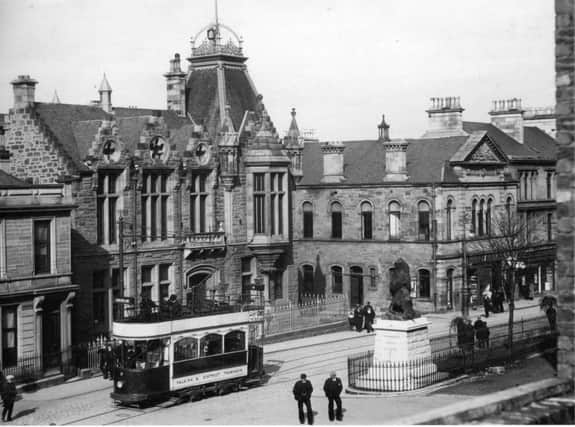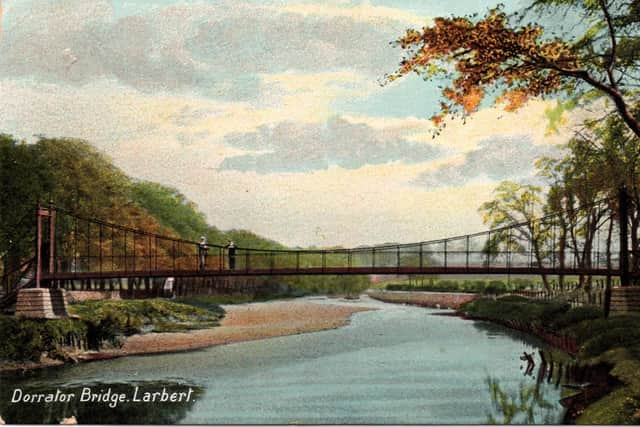The old Falkirk district tramway route provides a circular stroll through history


The seven and a half mile stroll through history follows the old tramway route through much of the northern part of the district.
So much history, it will take me more than a week!
We start our journey outside the old Burgh Buildings in Newmarket Street where the trams set off in both directions.
Advertisement
Hide AdAdvertisement
Hide Ad

The building opened in 1880 and is still in good nick after 140 years.
Heading west past the site of Aiken’s Brewery which opened in 1743 and only closed in the late 1960s, we walk between the old Sheriff Court (1870) and West Church (1799) and on down the Tanners’ Brae, a reminder of the days when Falkirk had several leather works, this one drawing water from the West Burn now piped beneath the road.
Other old activities are preserved in the names ‘bleachfield’ and Kilns House, once home to the Victorian Procurator Fiscal John Gair.
Another prominent lawyer, James Russel, lived at Arnotdale set within parkland now named after Robert Dollar, the Falkirk born philanthropist who gifted it to the town in the 1920s.
Advertisement
Hide AdAdvertisement
Hide AdThe Peking lions at the gate came from the Emperor of China with whom Dollar had strong personal links.
The War Memorial was unveiled in June 1926 to honour the men who fell in the Great War.
Approaching the canal the skyline is still dominated by the chimney of the former (and soon to be restored) Rosebank Distillery where tripled-distilled Lowland malts were produced from the 1840s.
Over the canal and we are officially in Camelon.
Landmarks are few here but Lemetti’s must get a mention as well as the new Sheriff Court which opened in 1990.
At the Roman Bar we turn northwards towards Larbert.
Advertisement
Hide AdAdvertisement
Hide AdFalkirk Golf Club’s course on the left beyond the railway was designed by the famous James Braid in 1922 and covers ground once occupied by the Romans.
The nearby bus depot still uses the red brick buildings constructed to house buses and trams in the 1930s and across the road a path leads to the new Dorrator Bridge which replaced the good old ‘swing bridge’ of 1893 in 2015.
Approaching the Carron we pass the often incorrectly named ‘Larbert Mill’ building which has been beautifully restored as a dance studio.
Three bridges cross the river here: the old one built in 1780, the modern one from 1926 and the 15 arches of the 1848 railway viaduct which was the scene of a famous rail crash 20 years later in which many cattle and sheep were killed.
Advertisement
Hide AdAdvertisement
Hide AdOn we go under the viaduct and up the hill near the place where the Scottish Army’s guns fired over the river towards Oliver Cromwell’s soldiers in 1651.
On the left Larbert Old Parish Church built 200 years ago stands close to a famous graveyard and the tombs of men of distinction like Rev. Robert Bruce, his descendant James Bruce, the Abyssinian traveller, and the mighty men of Carron Company.
Time to take a break.
The choice is simple, the Commercial for a pint or a walk round the historic graveyard.
Though sorely tempted I chose the latter. Fewer calories!
Message from the editor:
Thank you for reading this article on our free-to-read website. We're more reliant on your support than ever as the shift in consumer habits brought about by Coronavirus impacts our advertisers.
Please consider purchasing a subscription to our print newspaper to help fund our trusted, fact-checked journalism.
Comment Guidelines
National World encourages reader discussion on our stories. User feedback, insights and back-and-forth exchanges add a rich layer of context to reporting. Please review our Community Guidelines before commenting.
